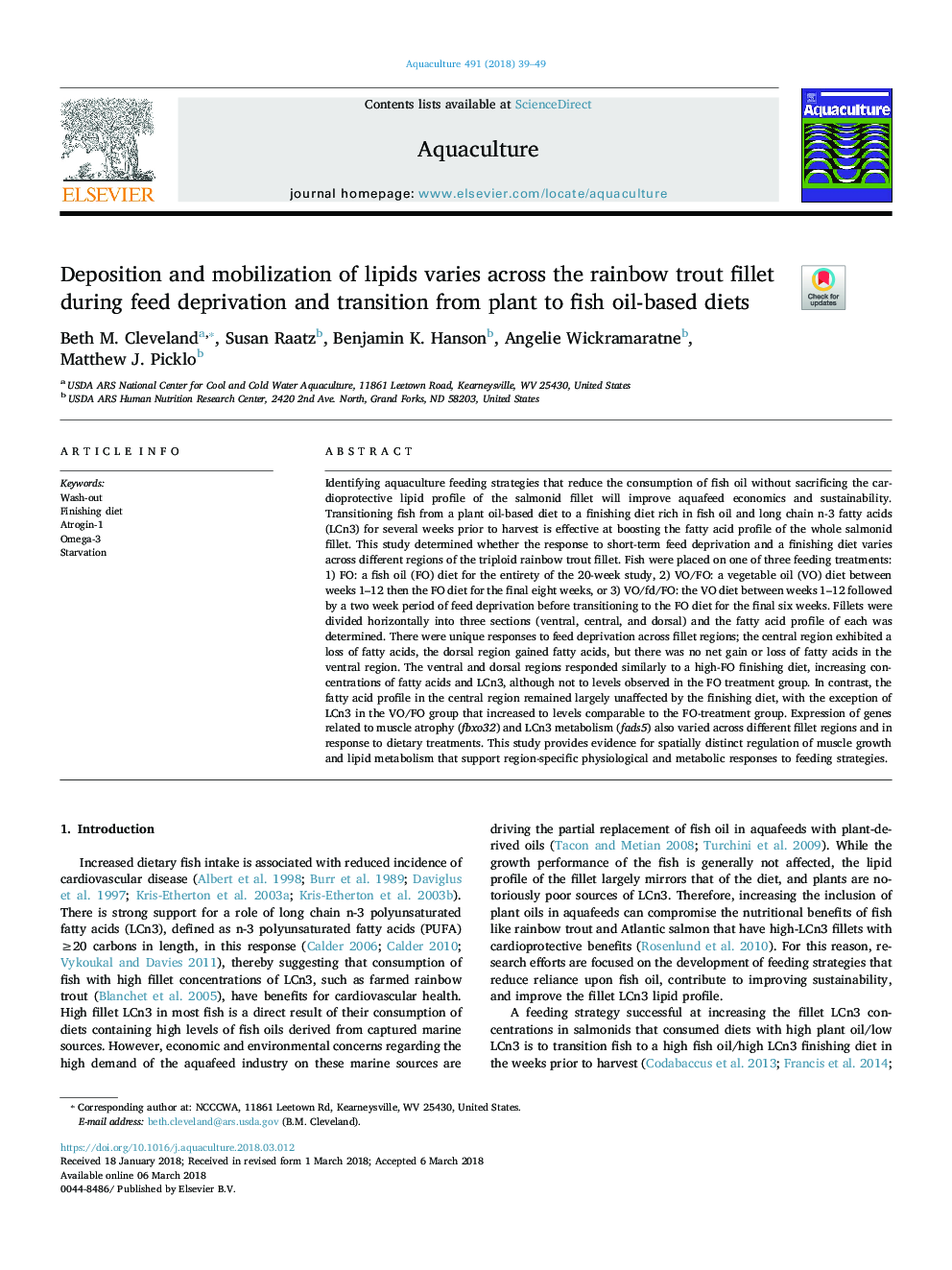| کد مقاله | کد نشریه | سال انتشار | مقاله انگلیسی | نسخه تمام متن |
|---|---|---|---|---|
| 8493237 | 1552797 | 2018 | 11 صفحه PDF | دانلود رایگان |
عنوان انگلیسی مقاله ISI
Deposition and mobilization of lipids varies across the rainbow trout fillet during feed deprivation and transition from plant to fish oil-based diets
ترجمه فارسی عنوان
بارگذاری و بسیج لیپید ها در سراسر فیله ماهی قزل آلا رنگین کمان در طول محرومیت و انتقال از گیاه به رژیم های غذایی مبتنی بر روغن متفاوت است
دانلود مقاله + سفارش ترجمه
دانلود مقاله ISI انگلیسی
رایگان برای ایرانیان
کلمات کلیدی
موضوعات مرتبط
علوم زیستی و بیوفناوری
علوم کشاورزی و بیولوژیک
علوم آبزیان
چکیده انگلیسی
Identifying aquaculture feeding strategies that reduce the consumption of fish oil without sacrificing the cardioprotective lipid profile of the salmonid fillet will improve aquafeed economics and sustainability. Transitioning fish from a plant oil-based diet to a finishing diet rich in fish oil and long chain n-3 fatty acids (LCn3) for several weeks prior to harvest is effective at boosting the fatty acid profile of the whole salmonid fillet. This study determined whether the response to short-term feed deprivation and a finishing diet varies across different regions of the triploid rainbow trout fillet. Fish were placed on one of three feeding treatments: 1) FO: a fish oil (FO) diet for the entirety of the 20-week study, 2) VO/FO: a vegetable oil (VO) diet between weeks 1-12 then the FO diet for the final eight weeks, or 3) VO/fd/FO: the VO diet between weeks 1-12 followed by a two week period of feed deprivation before transitioning to the FO diet for the final six weeks. Fillets were divided horizontally into three sections (ventral, central, and dorsal) and the fatty acid profile of each was determined. There were unique responses to feed deprivation across fillet regions; the central region exhibited a loss of fatty acids, the dorsal region gained fatty acids, but there was no net gain or loss of fatty acids in the ventral region. The ventral and dorsal regions responded similarly to a high-FO finishing diet, increasing concentrations of fatty acids and LCn3, although not to levels observed in the FO treatment group. In contrast, the fatty acid profile in the central region remained largely unaffected by the finishing diet, with the exception of LCn3 in the VO/FO group that increased to levels comparable to the FO-treatment group. Expression of genes related to muscle atrophy (fbxo32) and LCn3 metabolism (fads5) also varied across different fillet regions and in response to dietary treatments. This study provides evidence for spatially distinct regulation of muscle growth and lipid metabolism that support region-specific physiological and metabolic responses to feeding strategies.
ناشر
Database: Elsevier - ScienceDirect (ساینس دایرکت)
Journal: Aquaculture - Volume 491, 1 April 2018, Pages 39-49
Journal: Aquaculture - Volume 491, 1 April 2018, Pages 39-49
نویسندگان
Beth M. Cleveland, Susan Raatz, Benjamin K. Hanson, Angelie Wickramaratne, Matthew J. Picklo,
